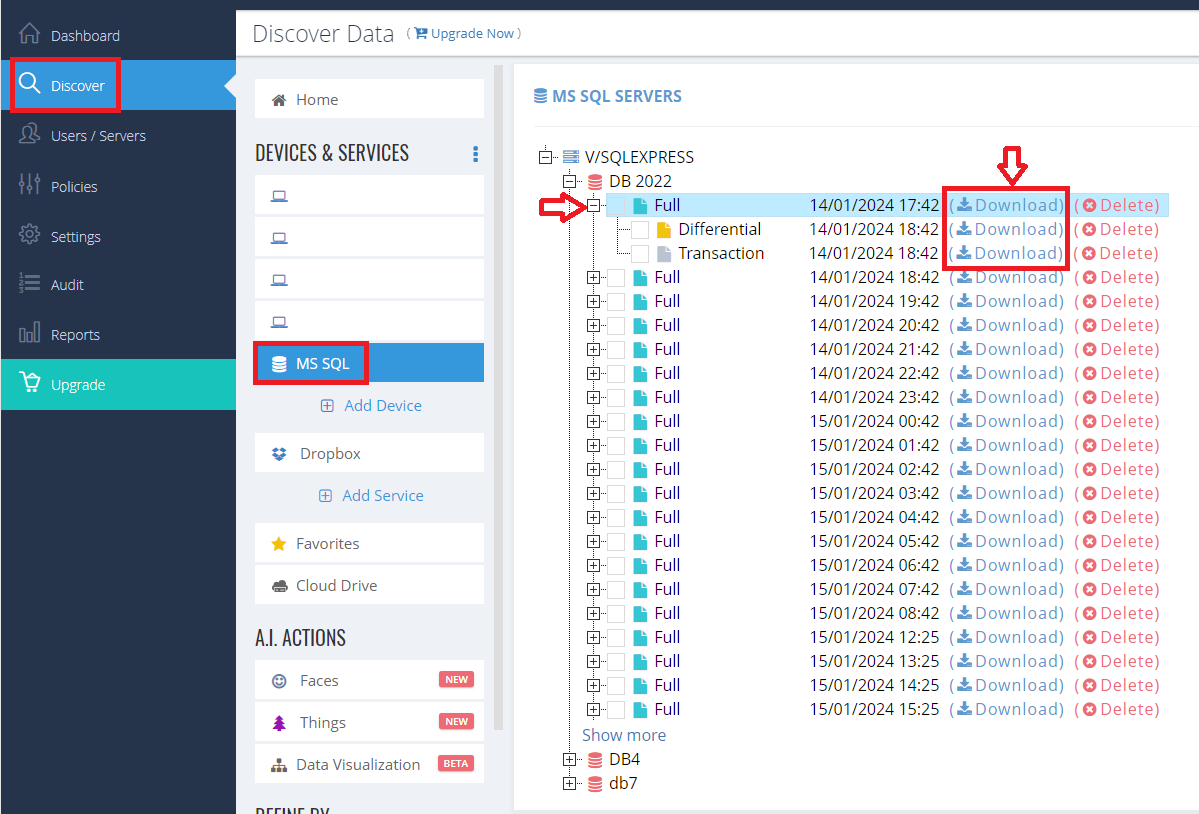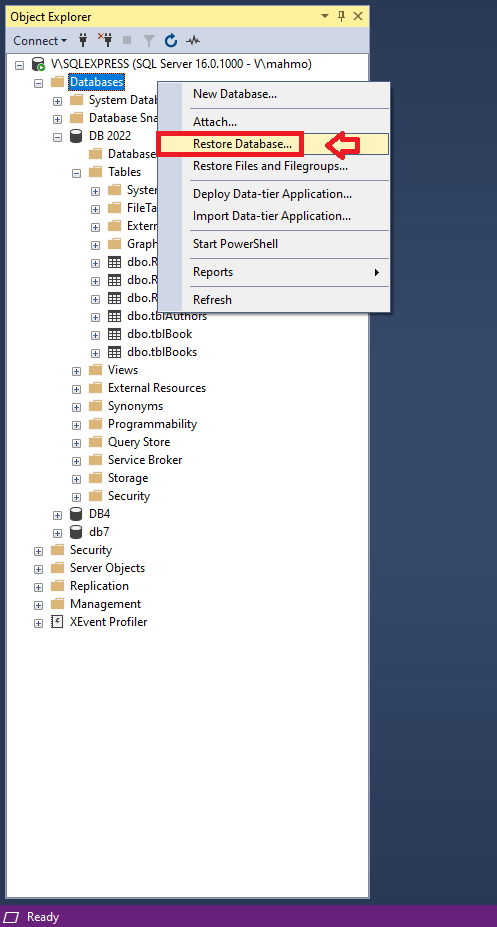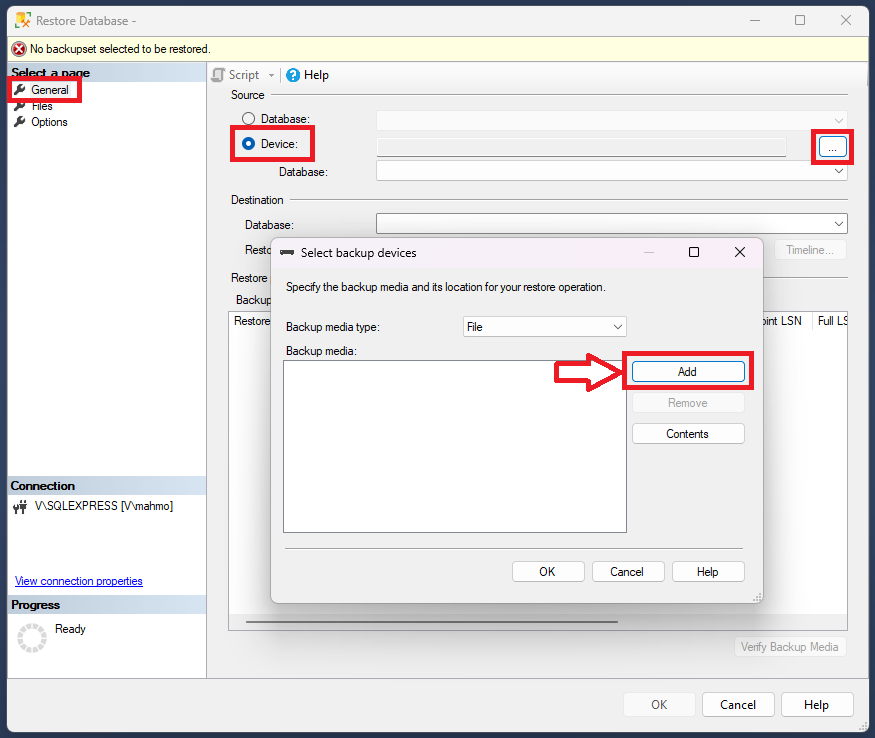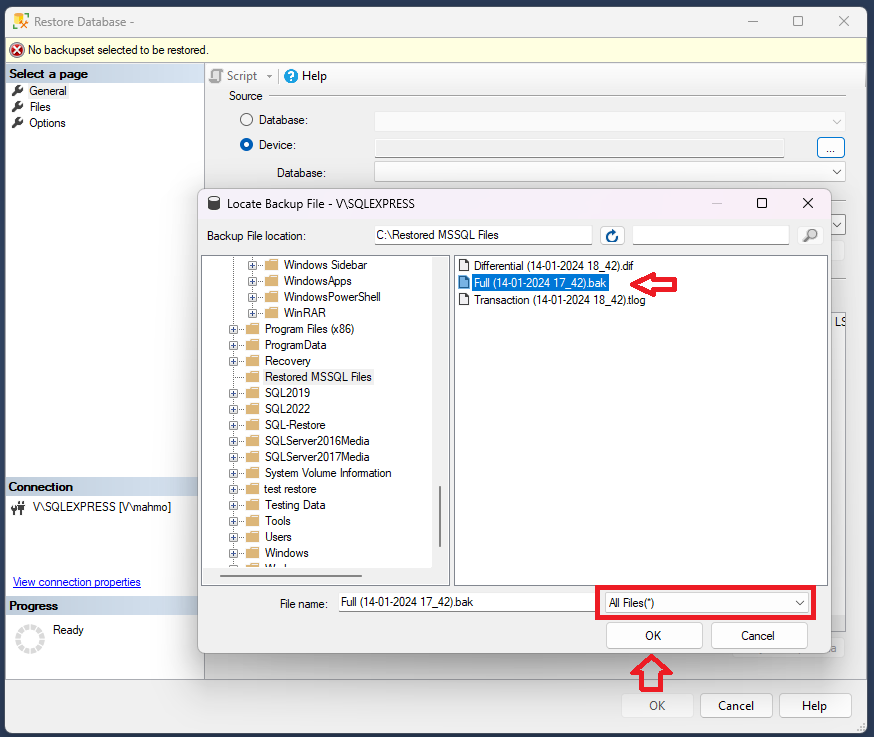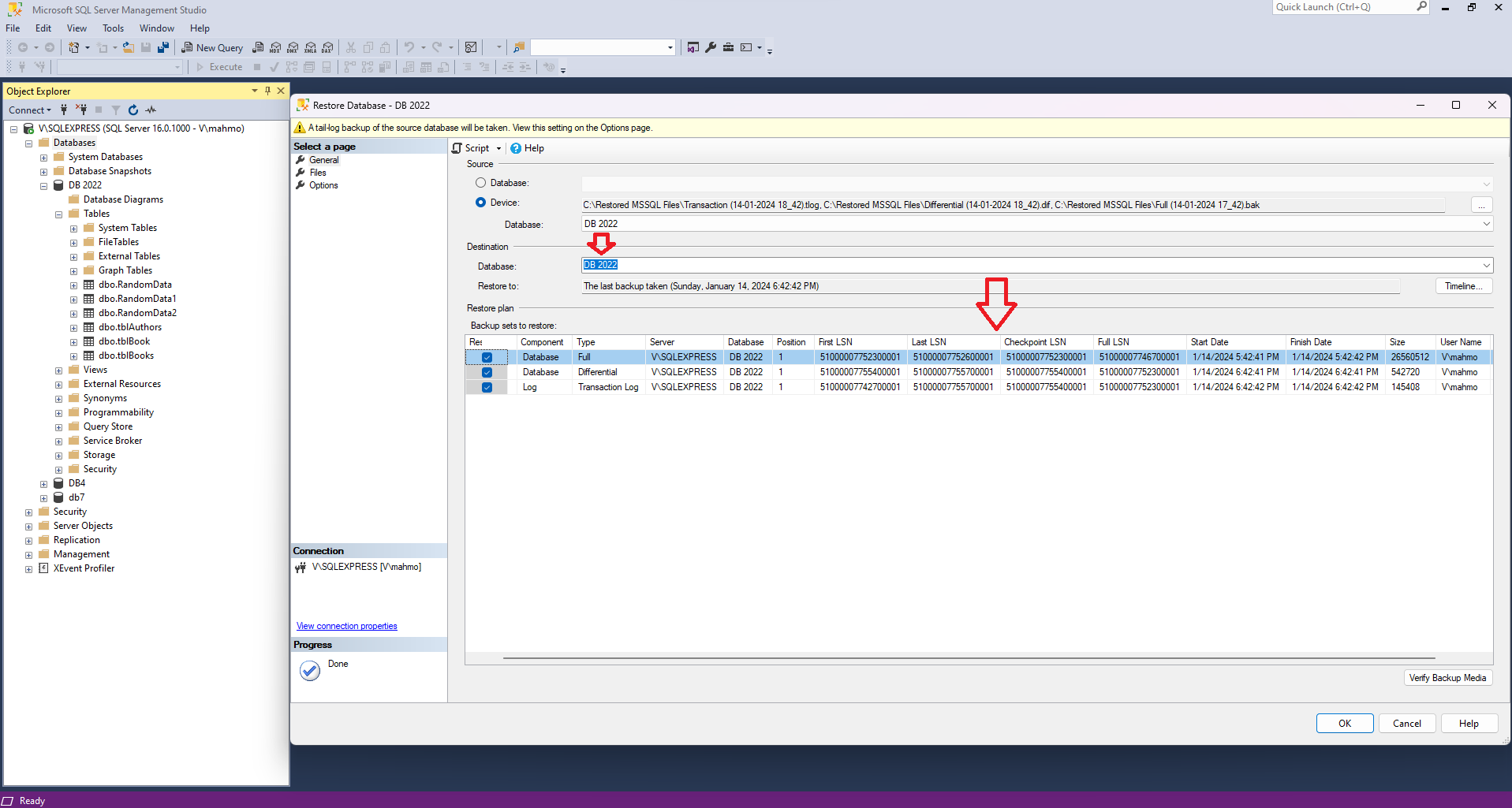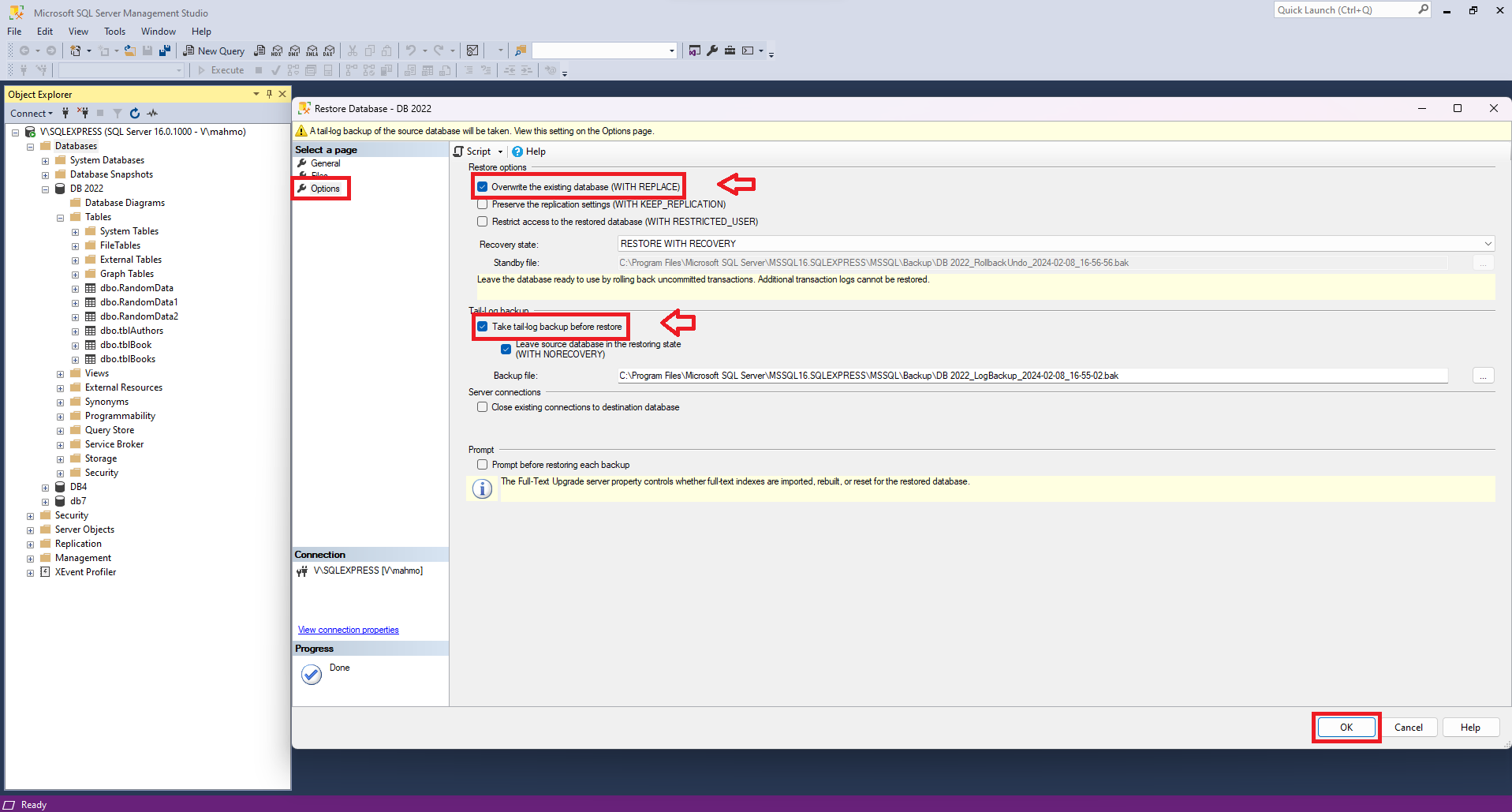BigMIND users can download the MS SQL backup for any database from their online account and import it to their Microsoft SQL Management Studio, following the steps below:
1. Sign in to your BigMIND online account where the MS SQL backup is stored.
2. Navigate to the Discover page.
3. Locate the MS SQL button on the left-side panel of the Discover page and click on it.
4. Expand the tree of the desired server by clicking the + button, then expand the tree of the desired database.
5. Download the desired backup(s) by clicking the Download button next to each one. You can download Full, Differential, and Transaction Logs backups.
TIP! After downloading the MS SQL files from the Discover page, it is recommended to organize them in an easily accessible folder for smoother importation to Management Studio.
6. Launch your MS SQL Management Studio.
7. Right-click the Databases folder on the left-side panel and choose the Restore Database.. option to open the Restore Database window.
8. In the Restore Database window, switch the Source to Device and click the Browse button to select the backup file.
9. In the Select backup devices window, click the Add button.
10. In the opened Locate backup file window, ensure the All Files option is selected from the drop-down menu of file types at the bottom-right corner. Navigate to the folder containing the downloaded MS SQL backup, select it, and click OK.
Full backup file has the .bak extension and can be restored independently.
Differential backup file has the .dif extension and it requires both the Full and Differential files to restore a database successfully, as Differential backup cannot be restored alone.
Transaction Log backup file has the .tlog and it requires Full, Differential, and Transaction Logs to restore a database successfully.
11. After selecting the desired backup file(s), a new screen will display details of the restored files and confirmation of the destination. This page includes information such as the backup date and size to be restored.
12. To overwrite the existing MS SQL database, navigate to the Options section on the left-side panel of the Restore Database window. Choose the Overwrite the existing database option under the Restore options section and select Take tail-log backup before restore under the Tail-log backup section.
13. Click OK to initiate the restoration process.
During the restoration process, ensure that the database you are restoring is not in use, as it cannot restore a database that is currently in use and will generate an error message.

